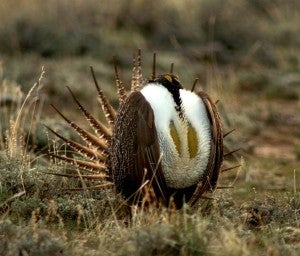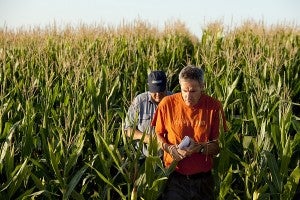 On Colorado River Day, it’s worth considering how we can write the next chapter in the water story of the American West.
On Colorado River Day, it’s worth considering how we can write the next chapter in the water story of the American West.
With the recent news that Lake Mead is at its lowest level in history, it’s impossible to ignore the trajectory of America’s hardest-working river. In the Colorado River Basin, we are already using more water annually than is being supplied by snowpack and other precipitation. The Bureau of Reclamation and others predict that this gap in water supply and demand will increase to nearly 4 million acre-feet by 2060, with significant shortages possible as early as 2017.
It has become clear that, over time, our water uses are going to have to change. In thinking about where – in what sectors – this change should take place, we must also consider the environmental, cultural and economic services that each sector provides.












 Fertilizer use is key to increasing the productivity necessary for farms to feed rising populations. However, not using the right amount in the right place at the right time is one of the biggest threats to a stable climate. Nitrogen fertilizer not used by crops emits nitrous oxide, a heat-trapping gas 300 times more powerful than carbon dioxide. It also contaminates water supplies, causes algae blooms downstream and erodes soil health.
Fertilizer use is key to increasing the productivity necessary for farms to feed rising populations. However, not using the right amount in the right place at the right time is one of the biggest threats to a stable climate. Nitrogen fertilizer not used by crops emits nitrous oxide, a heat-trapping gas 300 times more powerful than carbon dioxide. It also contaminates water supplies, causes algae blooms downstream and erodes soil health. There’s a growing excitement around spreading compost on rangelands to help fight climate change. Over the past four years we have learned that grazed rangelands are really good at pulling carbon out of the air and sequestering it in the soil below. And if you add compost just one time, you can capture carbon dioxide from the atmosphere for more than seven years. Plus, you’ll increase both the quality of the grasses and the ability of the soils to hold water. If we scaled this to just 5 % of California’s rangelands, we could capture approximately 28 million metric tons of carbon dioxide per year, which is about the same as the annual emissions from all the homes in California.
There’s a growing excitement around spreading compost on rangelands to help fight climate change. Over the past four years we have learned that grazed rangelands are really good at pulling carbon out of the air and sequestering it in the soil below. And if you add compost just one time, you can capture carbon dioxide from the atmosphere for more than seven years. Plus, you’ll increase both the quality of the grasses and the ability of the soils to hold water. If we scaled this to just 5 % of California’s rangelands, we could capture approximately 28 million metric tons of carbon dioxide per year, which is about the same as the annual emissions from all the homes in California.